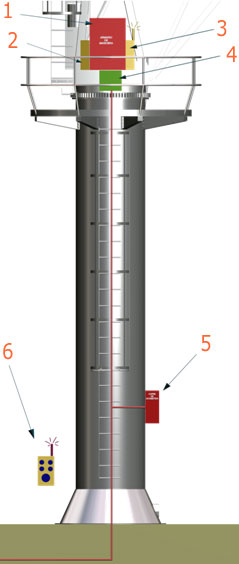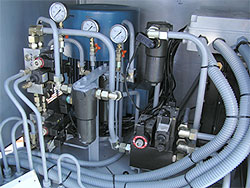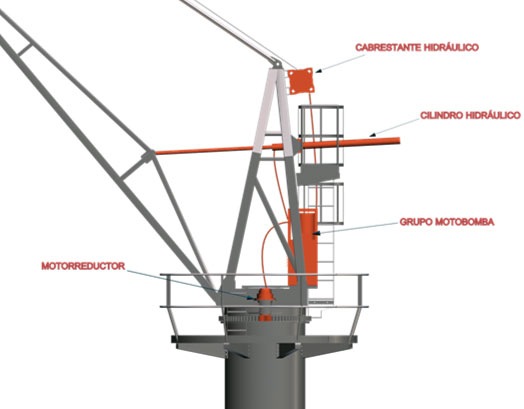|
|
 |
| DOUBLE BOOM CRANES (Page 4 of 5) |
| |
|
| |
|
| Electrical equipment |
| |
 1. Control box 1. Control box
2. Operator’s box
3. Radio-control receptor
4. Slip-ring assembly
5. Connection box
6. Radio control
The crane mechanisms’ electric feed is three-phase with an earth, and is ready to be connected to a nominal 400V and 50Hz supply.
In compliance with current standards, the electric motors ensure the normal working of the elevation and turning mechanisms with a nominal load when the electricity supply parameters are: ± 10% of nominal voltage, and ± 5% of nominal frequency.
All the control equipment is inside the watertight control box on the turret. A differential relay and a circuit relay in the connection box at the foot of the pivot protect the motors and the installation from overloads and leaks that could damage the crane’s mechanisms or render them useless.
The slip-ring assembly passes the crane’s general power supply from the fixed to the moving parts, allowing a 360o range of movement.
All the crane’s movements are performed using radio control, which gives it great mobility.
The crane is controlled with a maximum of 24V, in compliance with current standards.
In the event of a failure in radio control, there is an option for controlling the crane with a gradual manipulator located in the control box at the base of the turret. |
| |
| |
|
| Hydraulic equipment |
| |

The hydraulic equipment powers the turning, reach and elevation mechanisms.
All the crane’s movements work hydraulically.
A group of motorised pumps at the back of the turret provides hydraulic power for the mechanisms that allow the crane to elevate, turn and change its range. |
|
| |
-Change of range through a hydraulic cylinder located in the middle of the turret
-Turning movements through a hydraulic gearbox located on the side of the platform where the turret is based
-Elevation via a hydraulic winch located on the top of the turret, towards the rear.
|
 |
| |
| |
| |
|
| |
|

